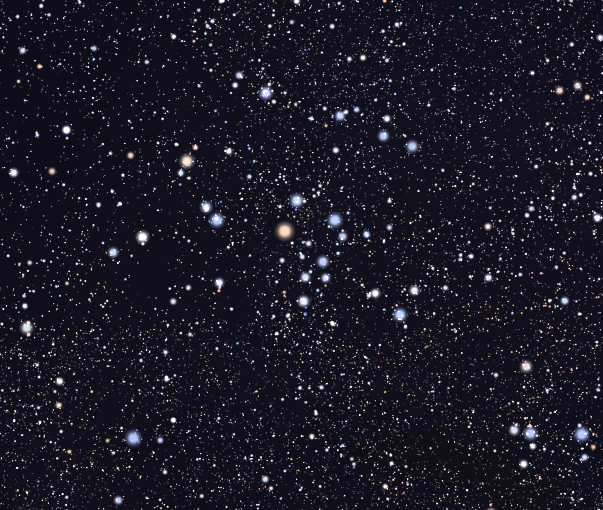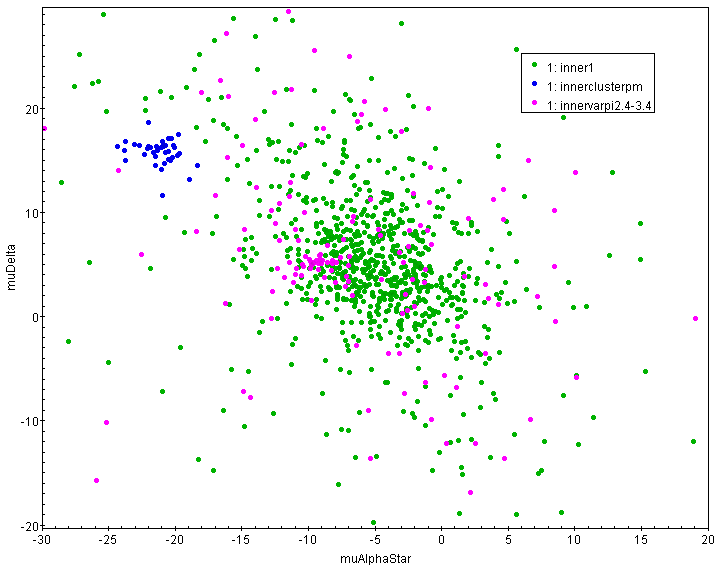IoW_20151218 - Gaia
Image of the Week |
|||
Tales of two clusters retold by Gaia |
|||
 |
|||
| Image 1 | |||
|
The celestial object NGC 2451 is a loose grouping of fairly bright stars in the southern Milky Way which was first described as a star cluster by John Herschel in 1835. In 1888, Johan Ludvig Emil Dreyer entered it in his famous sky inventory of star clusters and nebulae, the New General Catalogue (NGC), under the running number 2451. |
|||
 |
|||
| Image 2: NGC 2451 in the southern Milky Way | |||
|
Towards the end of the 20th century, doubts arose whether this group of stars really constitutes a cluster, i.e. a gravitationally bound collection of sibling stars of the same origin and age. These doubts were prompted by measurements of the brightness and colours of the putative members which did not quite match. In 1994, S. Röser and U. Bastian used their newly compiled Positions and Proper Motions Catalogue (PPM) to decide this question: for the PPM they had combined more than 100 years of position measurements to compute precise proper motions for almost half a million stars on the whole sky. As a little science application they checked the motions of the putative cluster members. As a cluster, those would have to move at the same speed and direction, to within the uncertainty of the measured proper motions. But they did not. Instead, in a diagram plotting the east-west motion versus the north-south motion the putative members were scattered all over the place instead of being concentrated in a tight group. The cluster was thus finally proven to be non-existent. |
|||
 |
|||
| Image 3 | |||
|
What do the magenta-coloured points tell us? At first sight, these points appear to be very scattered. Of course there are stars unrelated to any cluster which just happen to be at about 1300 lightyears away from the Sun and in the right direction as seen from us. But note the strong concentration of such points at the left rim of the galactic "background" clump. It is too dense and distinct to be just a coincidence. Those are the members of NGC 2451B. They share a common motion, within the uncertainties of the present Gaia data. If you like, you can read the apparent motion of the cluster from the image. But do not trust it yet! The data shown are very preliminary. Well calibrated - while still preliminary - Gaia motions and parallaxes of 2 million stars, including the ones shown here, are still to be produced and verified over the next few months. They will not become available before summer 2016. |
|||
|
Credits: ESA/Gaia/DPAC/DPCE/DPCB/CU3/U. Bastian (ARI, Heidelberg) Image 2: By Roberto Mura (Own work) [CC BY-SA 3.0], via Wikimedia Commons [Published:18/12/2015] |
|||
- Removed a total of (12) style text-align:center;
- Removed a total of (3) style text-align:justify;
- Removed a total of (1) border attribute.
- Removed a total of (1) cellpadding attribute.
- Removed a total of (1) cellspacing attribute.
Image of the Week Archive
- Removed a total of (1) border attribute.
- Removed a total of (1) cellpadding attribute.
- Removed a total of (1) cellspacing attribute.








































 Sign in
Sign in
 Science & Technology
Science & Technology
